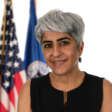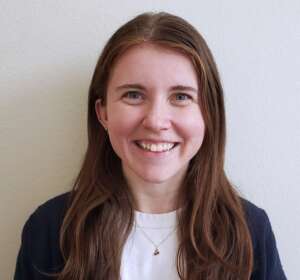Open Season Exchange 2022: OPM Director Kiran Ahuja on balancing benefits, affordability
What’s often more important than actually making an FEHB change is simply taking a look at the options available, advises OPM Director Kiran Ahuja. We sit dow...
The Office of Personnel Management always encourages more federal employees and retirees to take advantage of open season, the window of time when participants in the Federal Employees Health Benefits program can switch their health care options or change providers. But what’s often more important than actually making a change is simply taking a look in the first place at what other options are out there.
“The message we really want to give here is for families and our employees to take the time to check out which plan is going to be most appropriate for them, that fits with their financial situation as well as their health needs,” OPM Director Kiran Ahuja said during the Federal News Network Open Season Exchange 2022. “I hope to see a little bit of an uptick in that number.”
That number for 2022 showed that just 2.5% of FEHB participants made changes during open season, which began Nov. 14 and continues until Dec. 12, 2022. But looking at the topline doesn’t really capture the full picture. Many participants may look at more options that are on the table, but then decide they don’t want to make a change to their enrollments — and that’s OK, Ahuja said. What’s more important is that they review different options, period, she said.
“For me, it really is about looking at the quantitative data on the back end with our website. We do get an uptick on folks who are checking out that information. What I would love to see is just that [number] really jump up,” she said.
How OPM spreads the word
OPM puts in internal work to try to move the needle on open season participation. Ahuja said the agency’s employees who deal with FEHB are pushing avenues including social media, direct communications with agencies and updates to the OPM website overall.
“We’re doing a number of things to ensure that we’re getting the word out. We have a lot of back and forth that we do with agencies,” she said. “We send out these administration letters, really reminding agencies of their responsibility of communicating these benefits to all their employees.”
Along with agency communications, OPM’s website has multiple tools that FEHB participants can use to review available plan options and then make the actual changes to their health insurance selections. OPM also offers brochures for enrollees to see details of FEHB options, as well as surveys to assess participants’ satisfaction with the available choices.
“There is really, frankly, lots of information for all our federal government employees and their families to take a look,” Ahuja said.
Managing higher than normal premium increases
The especially high premium rates for 2023 may drive more FEHB participants to look at some other enrollment options. For 2023, FEHB premium rates will increase by an average of 7.2%, a combination of an 8.7% average increase for participants’ share and 6.6% average increase for the government’s share of costs.
Ahuja said that measuring participation levels this year during open season will help with future changes to the program.
“It’ll give us some room to assess for following years on what we actually saw this year,” she said. The agency has been paying attention to the low rate of enrollees who participate in open season, Ahuja said, adding, “We wanted to double down this year on that particular point.”
OPM calculates the annual premium rate increases by working with health insurance carriers to estimate the overall cost of services for the next year. The premiums for 2023 are increasing at a higher rate than what the FEHB has seen since 2011. That’s at least in part because the unexpected COVID-19 pandemic drove a major change in how much FEHB participants used their health care options.
“No one anticipated a pandemic. No one anticipated a real drop in services,” Ahuja said. “It was really hard to determine when that uptick would happen, when folks felt comfortable to go back, when there was more openness to actually treat other illnesses and medical conditions, because we saw many people actually put elective surgeries on hold. I think there are forces at play that sometimes make it challenging to be able to manage what’s coming.”
The use of health care dropped off for FEHB participants during the early part of the COVID-19 pandemic as many people put off having elective procedures. OPM said now that more people are comfortable going to the doctor in person, the use of health insurance — and therefore the cost of insurance — is going up next year to compensate for the lower-than-normal rates.
OPM tries to keep premium rates as low as possible, Ahuja said, but there are a lot of factors at play that are out of the agency’s control. But the high premium rates are a trend that many private sector insurance rates are facing as well.
“Most health insurance companies and large employer-based carriers saw a pretty significant uptick,” she said. “We’ve had very low premium increases in prior years. And so in some ways, what our folks are telling us is that the premium increase for this year is a little bit of a compensation.”
As enrollees are set to start paying higher premiums next year, OPM is also looking to maintain a balance with providing more expanded coverage options. There will be expanded telehealth options in 2023, such as virtual mental health services at low or no cost sharing. For COVID-19-related health costs, FEHB participants will have access to expanded coverage for over-the-counter COVID-19 tests, vaccine booster shots and therapeutics.
Enrollees will also get expanded coverage for maternal health, including childbirth classes, group care, home visiting programs and care for high-risk pregnancies. The efforts aim to address inequalities in maternal health. Additionally, there will be coverage for assisted reproductive technology and anti-obesity medications.
“We certainly try to achieve a balance between providing comprehensive plans that we know are so important to our enrollees, a best-in-class plan … but also the affordability. That is the real balance that we strive for, and that is the work that we will continue to do,” Ahuja said.
Although open season only lasts for about a month, the work in FEHB is year-round for OPM employees. The agency works with health insurance carriers to compare, for example, different ways to expand coverage options, as well as set premium rates for participants.
“It’s a pretty rigorous process that we are involved in, on our actuary side of looking at the data and what we get back from the health care carriers and then the conversations and negotiations that ensue,” Ahuja said. “We also work with them to ensure that, as we see some of the trends.”
Overall employee satisfaction, engagement and more
Similar to how OPM determines health coverage each year for FEHB, taking participants’ actions and feedback into account, the agency employs the same practice more broadly through the Federal Employee Viewpoint Survey. FEVS provides a way to understand both strong and weak points in how employees feel about their jobs, and where agencies need to focus to make improvements. For 2022, employee engagement leveled out, while pay and job satisfaction both declined compared to 2021.
“We use a number of metrics that are in the FEVS, including the employee engagement index, as a barometer for the work we want to do across the agencies,” Ahuja said. “Certainly, there are areas for work and improvement. And that is a big part of what we’re trying to promote with agencies. The data is only useful if we actually take action on it.”
OPM also added several new measurements to this year’s iteration of FEVS, including a new index to measure diversity, equity, inclusion and accessibility, as well as more questions on innovation and resilience. The agency will use the new DEIA index to track changes over the long-term.
In the short term though, federal employees and retirees should be thoughtful about reviewing FEHB options during open season and consider what may be ahead for them in 2023, Ahuja said.
“Spend some time on our website,” she said. “These type of decisions take a little bit of time. It requires being a bit purposeful, taking time to look at all the various plans and to see which is right for our employees.”
Check out all the sessions from the Federal News Network Open Season Exchange 2022.
6 OPM open season resources
Copyright © 2024 Federal News Network. All rights reserved. This website is not intended for users located within the European Economic Area.
Related Stories
2025 Open Season: Consumers’ Checkbook’s Kevin Moss on how a little planning can offset rise in premium costs
2025 Open Season Exchange: OPM’s Laurie Bodenheimer on what PSHB enrollees can expect
Featured speakers
-

Kiran Ahuja
Director, Office of Personnel Management
-

Drew Friedman
Reporter, Federal News Network
Upcoming Events
Related Stories
Top Stories

Kiran Ahuja
Director, Office of Personnel Management

Drew Friedman
Reporter, Federal News Network






